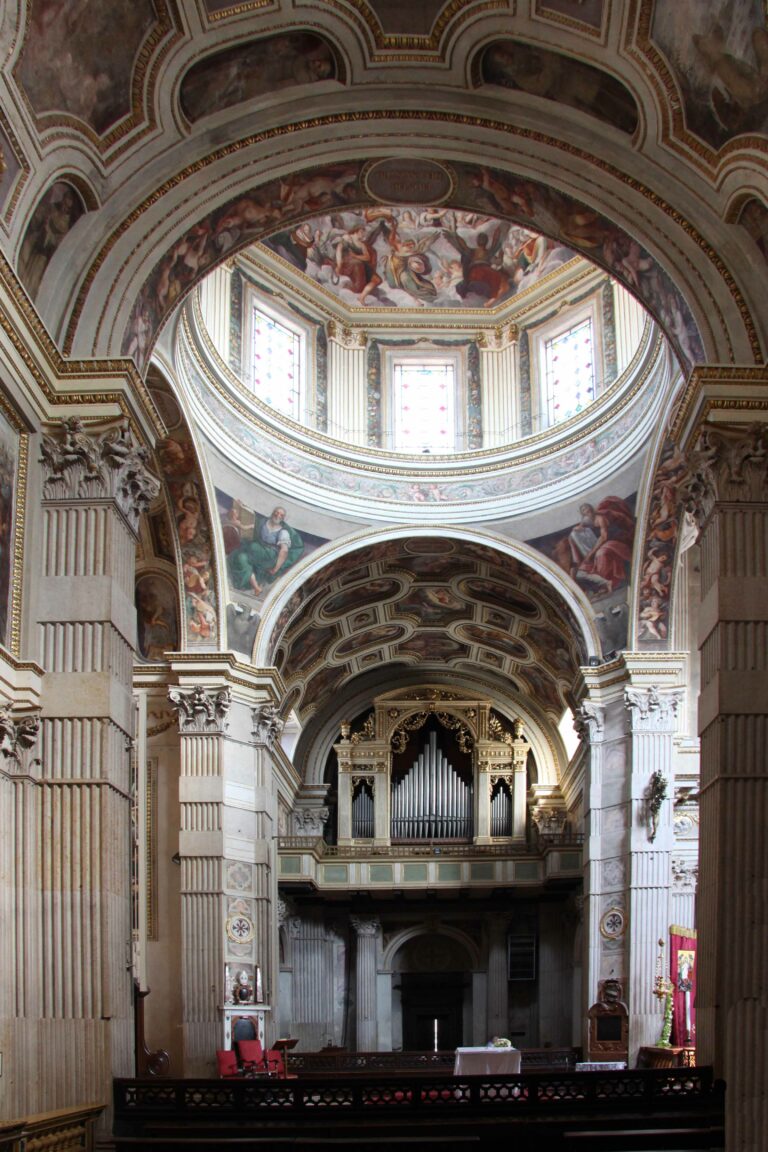A Church of Many Faces
One Monument, A Thousand Stories!


IT’S THE CATHEDRAL
Bishops & Diocese: Spiritual Guidance and Sacred Union!






IT’S THE CATHEDRAL, IT’S A PARISH CHURCH, IT’S A SANCTUARY







MONUMENT HISTORY
The Legendary and Historical Origins of the Cathedral of Mantua
👂 Voices and legends, largely unverified, trace the foundation of two parallel churches, dedicated respectively to Saints Peter and Paul, already in the third century, in the area destined to become the core of religious life in Mantua. It is hypothesized that the latter, located in the current seminary, may have become the first cathedral. Both were devastated by a fire at the end of the ninth century and were rebuilt by the eleventh century; since then, St. Peter’s, more spacious and centrally located, served as the cathedral. 🏛️
🛠️ The reconstruction of St. Peter’s was still underway when, in 1086, the future patron Saint Anselm was buried there. The Romanesque temple had three naves and stood above a crypt. Remnants of this Romanesque cathedral remain, particularly the structures of the central nave and the bell tower, erected on a tower perhaps of Roman origin. 🏢



A SYNTHESIS OF MANTUAN CIVILIZATION




🖌️ The centuries of the early Middle Ages are evoked by the fresco illustrating the discovery of the Most Precious Blood and indirectly by the memory of the fire that led to the reconstruction of this temple in Romanesque forms. For Mantua, that was the time of the Canossa and Saint Anselm. 🖌️
👑 The body of the blessed bishop Giacomo Benfatti evokes the transition from the Bonacolsi to the Gonzaga, who have left numerous signs of their hegemony. The intervention by the Dalle Masegne celebrates the Gonzaga patron and recalls his other constructions. 👑
🎨 The presence of another blessed, Osanna Andreasi, evokes the Gonzaga of the early sixteenth century and particularly her friend Isabella d’Este. The latter is credited with the prestigious intervention of Giulio Romano, the master of another phase of Mantua’s cultural history. 🎨
🕰️ The painstaking recovery after the disastrous sack of Mantua (1530) is marked by the construction of the Chapel of the Sacrament, which instead speaks a now neoclassical language in its decoration. 🕰️
🇮🇹 The not easy times of subjugation to Austria and France are suggested by the canvases and the bodies of saints here transferred from other churches. However, the cathedral also bears witness to redemption: the glorious page of the Mantuan resurgence finds a poignant counterpart in the stole of don Tazzoli. 🇮🇹
🙏 The decades following the unification of Italy are particularly marked by the memories of a man who intervened with wisdom, Bishop Sarto. From Mantua, this bishop went to Rome to lead the universal Church: and from Rome came to Mantua, at the end of the twentieth century, his successor John Paul II. 🙏
🌿 Indeed, the cathedral is not a museum: it is a space for life, life that continues and indeed, in the eyes of the believers, is manifested here in its highest forms. 🌿



 Transcendence and Art: The Theological-Liturgical Depth of Mantua Cathedral
Transcendence and Art: The Theological-Liturgical Depth of Mantua Cathedral 
 Introduction:
Introduction:
The Cathedral of Mantua, with its diversity and uniqueness, stands as a monument brimming with theological-liturgical, historical, and artistic meanings. 
 Celestial Harmony:
Celestial Harmony:
The Cathedral of Mantua, dedicated to Saint Peter and con-cathedral with Saint Andrew, invites us to contemplate the celestial harmony expressed through sacred art and liturgy. 
 Historical and Scriptural Witness:
Historical and Scriptural Witness:
The Duomo is a eloquent witness to the historical and spiritual events of Mantua. 

 The Connection with the Gonzaga:
The Connection with the Gonzaga:
The significant intervention of the Gonzaga has left an indelible mark in the cultural history of Mantua and its Cathedral. 

 The Reconstruction by Giulio Romano:
The Reconstruction by Giulio Romano:
The art of Giulio Romano, dominating a significant phase of the Cathedral, is a tangible reminder of the union between the divine and the human. 
 Conclusions:
Conclusions:
The Cathedral of Mantua is a microcosm that encloses within it the wealth of Christian Tradition, the depth of theology, and the beauty of sacred art. 


